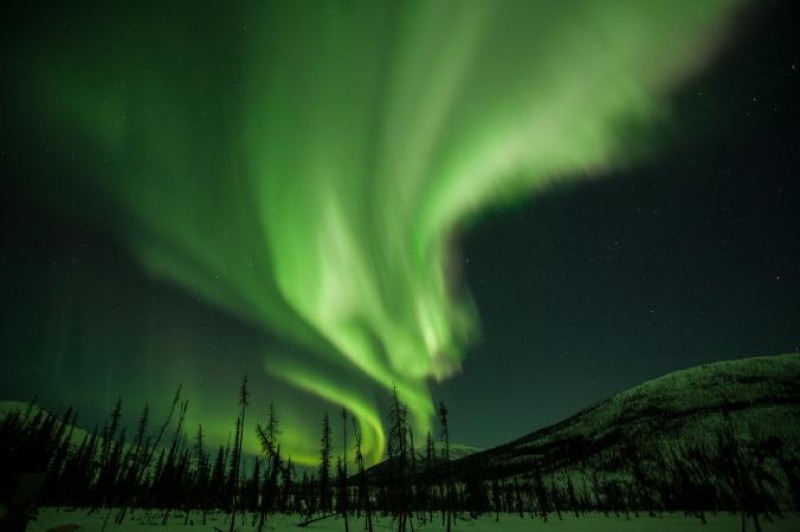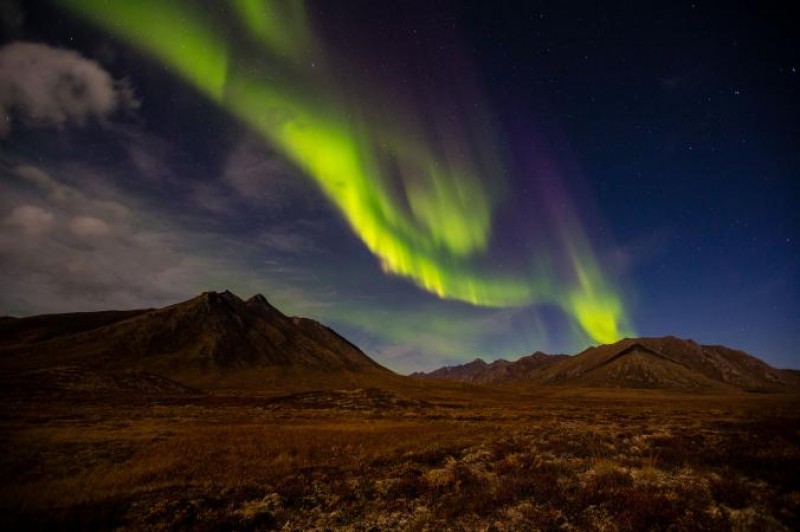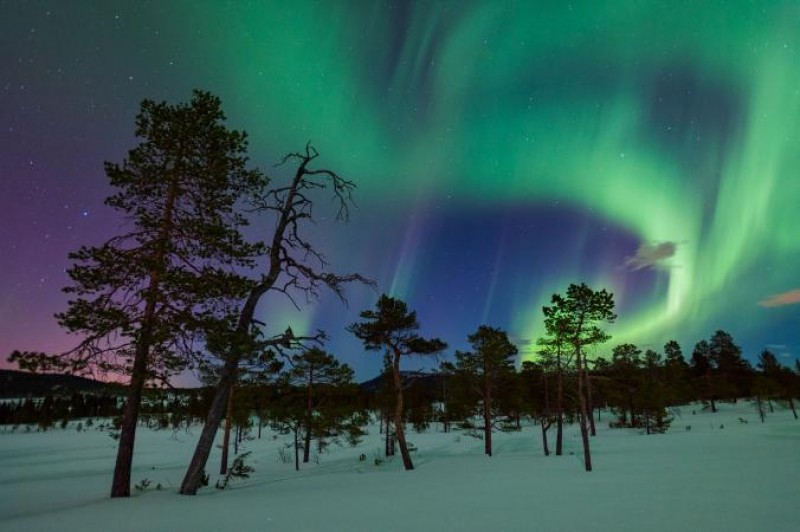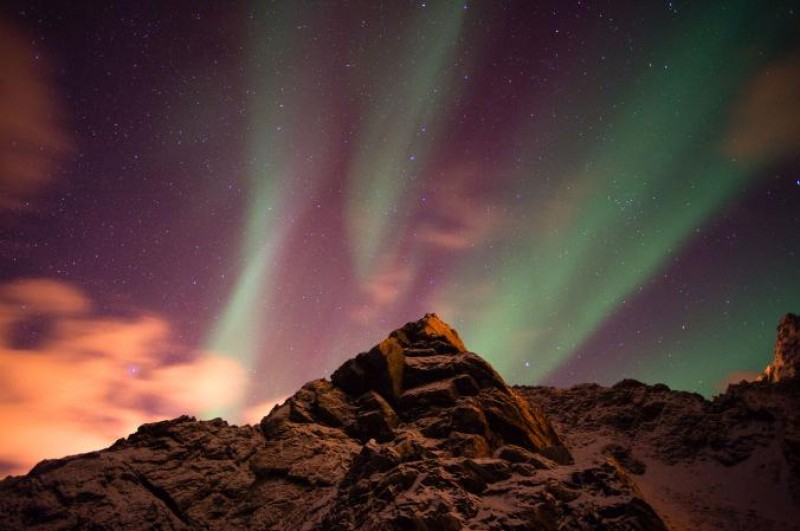
Sky-watchers should keep their eyes turned toward the poles the next few nights, as an incoming solar tempest may trigger colorful displays of auroras.

This past weekend, a giant gaping hole opened up in the corona, the sun’s upper atmosphere. Such coronal holes form when the sun’s magnetic field lines open up, allowing hot plasma to spill into space and sending out intense gusts of solar wind.

The latest solar blast has been racing through the inner solar system at speeds of two million miles an hour—with Earth in its crosshairs. This high-speed cloud of charged particles is expected to lash our planet between November 7 and 9.

When such gusts of solar wind reach Earth, they send charged particles racing along our planet’s magnetic field lines toward the poles, where they slam into the atmosphere. The incoming particles energize air molecules, triggering auroras. (Check out our picks for the seven best places to view auroras.)
The first waves of the solar stream may have already started lapping our planet’s protective magnetic bubble. Dazzling auroras were reported in the skies above Tasmania and Alaska late Monday and into early Tuesday morning, according to Spaceweather.com. But will the celestial fireworks continue?

Currently, forecasts put out by the U.S. National Oceanic and Atmospheric Administration's Space Weather Prediction Center are calling for a 50 to 60 percent chance of continued stormy conditions to last through at least November 9.
So if you have clear skies and you live north of 40 degrees latitude—anywhere north of the line stretching from Philadelphia to Denver, roughly speaking—it's worth a peek outside the next few nights.
Sky-watchers around the Arctic Circle and the southern tip of South America will most likely see something, and those in more mid-latitude locations—like Toronto, New York, Seattle, and London—may have a fair chance as well.
Traditionally, the best time to start searching for auroras is around mid-evening, continuing late into the night your local time. When the geomagnetic storm is intense enough, the first hints of auroras painting the skies can begin soon after local nightfall. But you should expect any auroras to really kick into gear around local midnight.

Watch for the first hints of a greenish glow to creep up the sky from the northern horizon for those in the Northern Hemisphere and the southern horizon for those in the Southern Hemisphere. If it ends up being a strong display, then a larger portion of the sky can get enveloped in orange, pink, and purple curtains waving overhead.
While there is no danger associated with this cosmic event, on rare occasions, much more powerful geomagnetic storms can damage electrical grids and temporarily knock out radio and satellite telecommunications.
At this point, scientists are waiting for follow-up footage from sun-watching satellites to confirm whether any giant clouds of high-energy particles, called coronal mass ejections, may come blasting out of from the coronal hole before it rotates away from Earth’s view.
Source: Andrew Fazekas